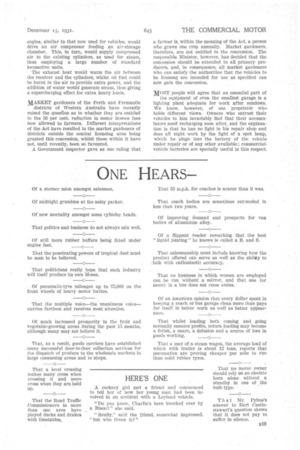LOOSE LEAVES
Page 36

Page 37

If you've noticed an error in this article please click here to report it so we can fix it.
A£22,000 consignment of British motor lorries and cars left Southampton a few days ago for New Zealand, and all the vehicles bore the Empire Marketing Board's label showing that they are of Btitish manufacture. They are for distribution in the various dairy farming areas of the Dominion and represent part of New Zealand's purchases from England in return for the homeland's purchases of Empire butter. It is significant to note that, during the first eight months of 1931, More than 70 per cent. of the total motor imports into New Zealand were British.
AN interesting new development in the treatment
of metals is the welding of a layer of stainless steel to ordinary steel, the material then formed being known in America as Plykrome, the producer being Industrial Welded Alloys, Inc., 225, Broadway, New York.
B18 The stainless steel plate is welded to the ordinary steel slab or bloom, which can then be rolled, in accordance with ordinary mill practice, into plate, bars, sheets, etc., and the alloy surface sandblasted, pickled or polished, depending upon the use for which it is intended. The result is much less expensive than the solid alloy and can be worked with greater ease. It should he useful for the oil and chemical trades, whilst in the motor industry it might be found advantageous to use this veneered steel in place of chromium plating.
NOT only is Mr. Ricardo's name well known in the automobile industry, but his activities include a wider field. At a recent lecture his suggestion for the future locomotive raised much interest.
In brief, he suggested that the existingtsteam engine should be modified so that a high-speed oil
engine, similar to that now used for vehicles, would drive an air compressor feeding an air-storage chamber. This, in turn, would supply compressed air to the existing cylinders, as used for steam, thus employing a large number of standard locomotive units.
The exhaust heat would warm the air between the receiver and the cylinders, whilst oil fuel could be burnt in the air to provide extra power, and the addition of water would generate steam, thus giving a supercharging effect for extra heavy loads.
MARKET gardeners of the Perth and Fremantle districts of Western Australia have recently raised the quesfion as to whether they are entitled to the 50 per cent, reduction in motor licence fees now allowed to farmers. Different interpretations of the Act have resulted in the market gardeners of districts outside the central licensing area being granted this concession, whilst those within it have not, until recently, been so favoured.
A Government inspector gave as one ruling that a farmer is, within the meaning of the Act, a person who grows one crop annually. Market gardeners, therefore, are not entitled to the concession. The responsible llinister, however, has decided that the concession should be extended to all primary producers, and, in consequence, all market gardeners who can satisfy the authorities that the vehicles to be licensed are intended for use as specified can now gain the concession.
MOST people will agree that an essential part of the equipment of even the smallest garage is a lighting plant adequate for work after sundown. We know, however, of one proprietor who holds different views. Owners who entrust their vehicles to him invariably find that their accumulators need recharging soon after, and the explanation is that he has no light in his repair shop and does all night work by the light of a spot lamp, which he plugs into the battery of the vehicle under repair or of any other available; commercialvehicle batteries are specially useful in this respect.




































































































